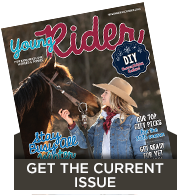Riders of all ages suffer from them. Experienced as well as beginner riders struggle with them, the horses we ride have to endure them, and every trainer can spot them: bad riding habits.
The following tips from top trainers and exhibitors will show you how to honestly evaluate your physical and mental trouble spots to form better habits in the saddle.
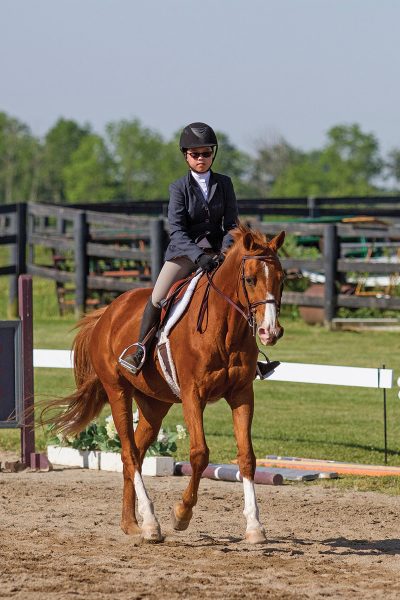
Losing Sight of Your Connection with Your Horse
Trainer Clint Fullerton owns Fullerton Equine in Bonner Springs, Kansas, and says that your riding shouldn’t be all about outperforming others or progressing the fastest.
“That’s a sure way to lose sight of what is really important—the connection with your horse,” he says. “There’s no such thing as a perfect rider or horse, and comparing your riding abilities or your horse’s talents to your peers isn’t healthy or realistic. A rider who is too wrapped up in being the best usually forgets the basics.”
Incorrect Upper Body Position
The best advice trainer Colton Smith, owner of Smith Horse Company in Kankakee, Ill., can give a rider who has issues with their hands and arms is to practice their upper body riding position on and off the horse until it feels completely natural.
“Have a friend or your trainer take pictures and videos of your rides to help you see the habits for yourself,” Colton says.
Another thing he suggests is to stand in front of a mirror and pull your riding position together:
◆ Back and neck straight
◆ Shoulders back and chest lifted
◆ Slight bend of your arms and elbows at your sides
◆ Wrists at a right angle with thumbs on top and fingers closed on pretend reins
“Then walk around, trying not to let your position come undone,” Colton says. “Check yourself in the mirror to see if any part of your body changed, and what position was easier for you to hold. That will give you a good idea on what needs to be worked on.”
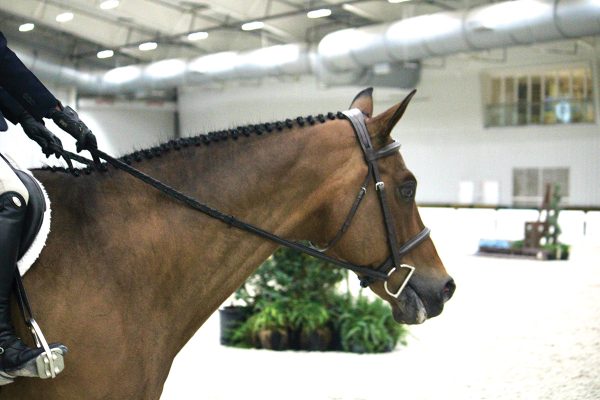
Leaning Forward
Trainer and judge Randy Wilson owner of Randy Wilson Quarter Horses in Zanesville, Ohio, reveals that leaning forward is a built-in response for riders when things get confusing, overwhelming or uncontrollable.
“This natural instinct will make you tip forward at the hips, roll your shoulders and lower your chest, freeze, and lean on the reins, which will pull on your horse’s mouth,” he explains.
There are many reasons why riders lean forward, which makes this habit a difficult one to manage, says Randy.
“Remember that a horse’s motor comes from the drive of his hind end, and your weight and balance is more effective when you’re sitting centered and slightly back.”
Forgetting to Keep Your Eyes Up
Trainer Tyler Haney, co-owner and trainer at Two Fox Farms in Ocala, Fla., says every rider needs to make a valid attempt to ride with a straight back and neck.
“By lifting your head to look forward, you’ll help support a tall upper body—one that doesn’t slump forward. It helps you pay attention to what’s going on ahead of and around you, too.”
Poor Leg Position
Trainer Alexandria Bryner, owner of Alexandria Bryner Performance Horses in Vanderbilt, Pa., explains that poor leg position is a common problem for riders. It usually stems from overall poor body position and unbalance.
“Riding with your shoulders square over your hips and your feet and legs just behind the girth stretching long with the stirrup on the ball of your foot and heels down should be your go-to leg position,” she says. “Once you become stronger in your core, you should move on to riding with no stirrups, maintaining proper leg and feet positions, making sure your toe isn’t pointing out.
“Heel-down exercises, such as standing in your stirrups and releasing your leg while pressing your heels down will also help,” Alexandria continues. “Use any on- or off-the-horse exercises and workouts that build your leg muscles. It takes consistent work to maintain leg correctness.”
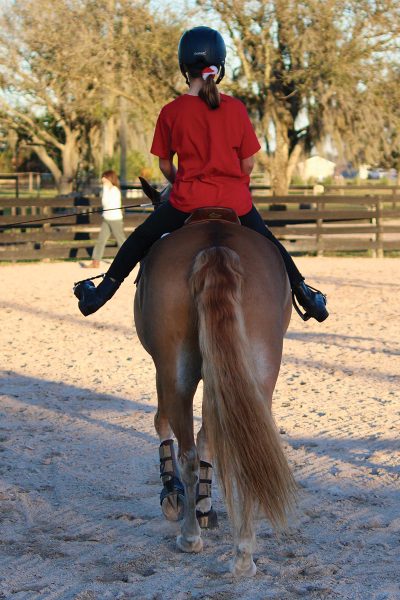
Letting Fear Get the Best of You
Alexandria says that one bad experience can tear down a rider’s confidence, and this habit of being overtaken by fear and anxiety is a common bad riding habit.
“It’s healthy to have some apprehension of horses, but it should feel more like respect than actual fear,” she says. “When you’re riding, your body, seat, hands and legs are a conduit for your emotions.
“The best advice I can give is having a plan to overcome whatever fear is standing in your way. Working with a professional trainer or instructor is highly recommended to gain control over your riding worries. Small, reachable goals for both you and your horse will help get you back on track. I truly believe the greatest way you can build confidence is through success and SMART goals [specific, measurable, achievable, relevant, and time-bound]. As you succeed at each goal, you will build confidence. As that grows, your fear will diminish.”
Over-Cueing
AQHA Youth exhibitor JR Pickard’s tip for riders who have the habit of over-cueing and rushing is to take a deep breath before asking your horse to do anything.
“Go in slow and light when cueing, and always start with a little ask of pressure to give your horse a chance to respond,” he says. “You can always add more leg, seat or hand pressure if needed. Overdoing cues can be frustrating to your horse, and it can cause him to develop his own bad habits, like throwing and swinging his head and gaping at the mouth to try to ward off the excess pulling from the reins. Staying calm and being clear with cues is everything when communicating with your horse.”
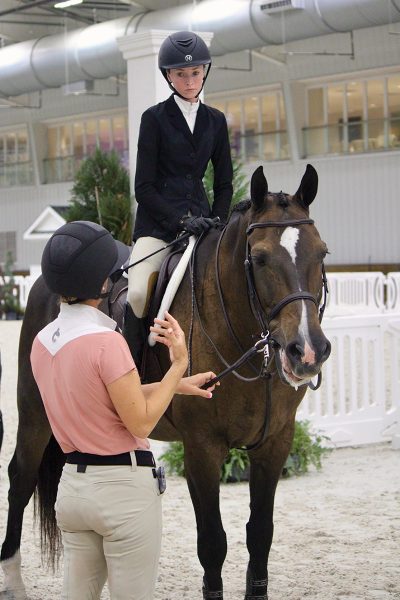
Overconfidence
Colton stresses that riders who are overconfident in their abilities tend to put themselves and horses in risky situations. He reminds his students that every decision they make needs to be in the best interest of their horse, who is trusting their judgement.
“Don’t ever push your skills or horse into situations you’re not ready for,” he says.
In the end, no matter how frequently we hear, “Heels down! Quit slouching! Eyes up,” we tend to fall apart minutes or even seconds later. By being more aware of your position and mindset throughout your rides, you’ll be able to concentrate on what feels correct. This will create new, positive habits while breaking the former bad ones.
This article about bad riding habits appeared in the July/August 2024 issue of Young Rider magazine. Click here to subscribe!

